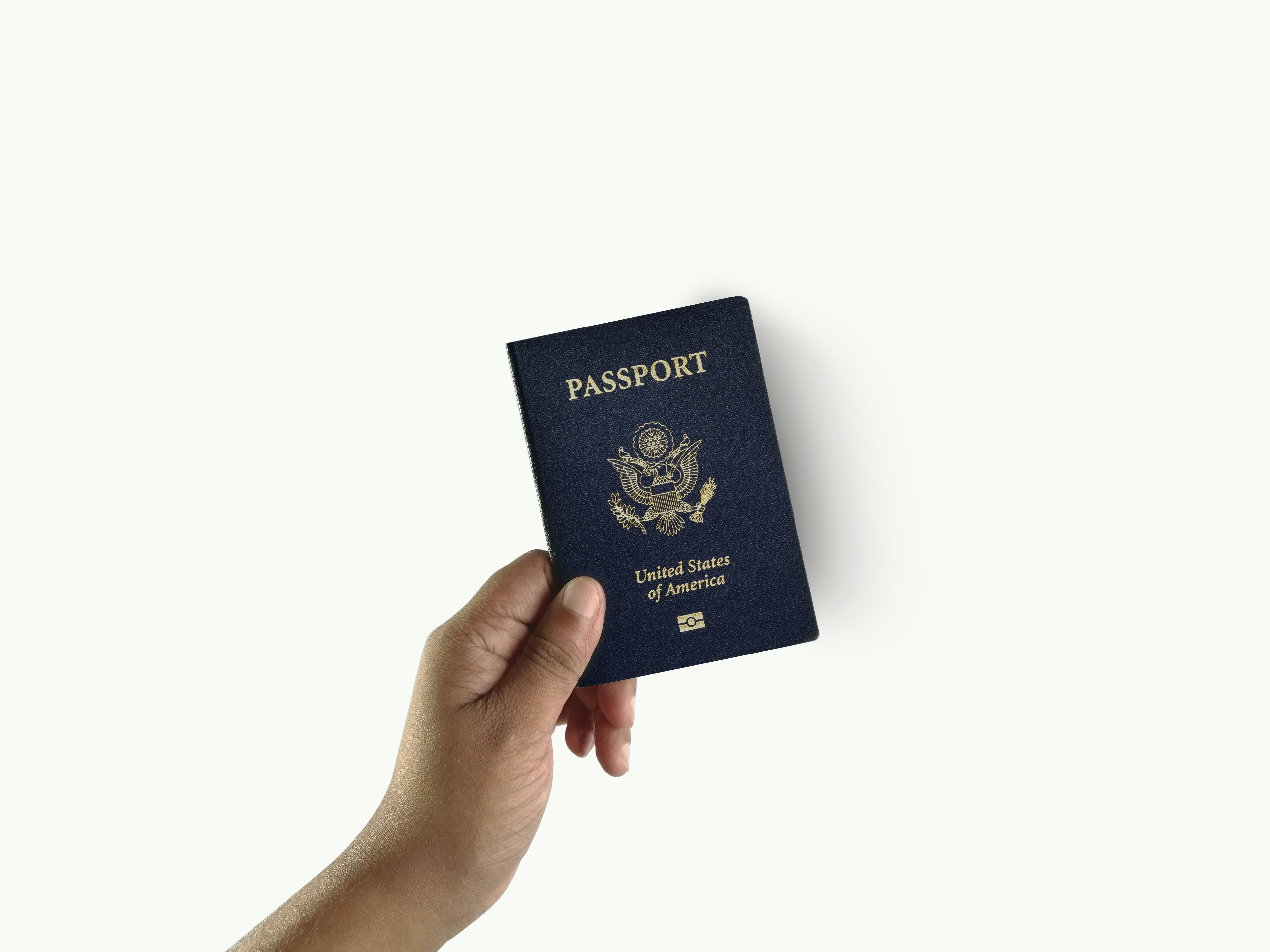
UK Visa & Work Permits Explained: Your Essential Guide for International Robotics Professionals
The world of robotics is rapidly expanding, merging mechanical engineering, artificial intelligence, computer vision, and advanced manufacturing to reshape how we live and work. As businesses explore automation in everything from manufacturing and logistics to healthcare and service sectors, the United Kingdom’s robotics landscape offers a wealth of opportunities. Britain’s blend of top-tier research institutions, forward-thinking start-ups, and government-backed innovation hubs make it an attractive destination for international robotics professionals who want to develop cutting-edge solutions and advance their careers.
However, if you’re not a UK or Irish national, securing the right work visa or permit is a critical prerequisite to taking advantage of the UK’s robotics boom. This comprehensive guide explains the main visa categories for robotics experts, provides insight into the eligibility criteria, and outlines practical steps to establish yourself in the UK’s thriving robotics community. Whether you specialise in mechatronics, AI-driven autonomy, industrial automation, or humanoid robotics, you’ll find plenty of options to pursue your passion—provided you navigate the UK visa system effectively.
1. The UK’s Booming Robotics Sector
Before exploring the work visa routes, let’s examine why the UK is such a magnet for robotics professionals:
World-Class Research InstitutionsUniversities like Imperial College London, the University of Oxford, and the University of Cambridge consistently lead in robotics research, focusing on areas like autonomous systems, soft robotics, and human-robot interaction. These institutions partner with industry giants and nimble start-ups, accelerating real-world applications.
Growing Robotics Start-up SceneAcross London, Manchester, Bristol, and Edinburgh, a range of robotics and AI start-ups are pushing new boundaries—developing advanced sensors, autonomous ground vehicles, collaborative robots (cobots), and more. Many of these companies rely on international talent to evolve rapidly.
Advanced Manufacturing & AutomationThe UK has long prioritised manufacturing and automation to boost productivity and competitiveness. Consequently, industries from automotive to aerospace invest heavily in robotic solutions, creating high demand for robotics engineers, software developers, and systems integrators.
Government Initiatives & FundingThrough programmes like Innovate UK and the Industrial Strategy Challenge Fund, the UK government offers funding and support for robotics and AI projects—driving collaborative R&D between businesses, universities, and research centres.
Broad Industry ApplicationRobotics isn’t confined to manufacturing. The UK also deploys robots in healthtech (surgical robots, assistive care), agritech (automated harvesting, precision farming), hospitality, logistics (automated warehouses, last-mile delivery robots), and beyond. This diversity opens a spectrum of career paths for robotics experts.
Given these drivers, it’s no surprise the UK’s robotics market continues to attract global talent. The next step is understanding which visa route aligns with your skills, career stage, and aspirations.
2. Overview of the UK Immigration System
Since Brexit, nearly all EU, EEA, and Swiss citizens (with few exceptions) must obtain a visa or have settled/pre-settled status to work in the UK. The points-based immigration system categorises skilled professionals under various routes, but for robotics specialists, two often stand out:
Skilled Worker Visa – A job offer–driven route where a UK sponsor employs you, awarding points for salary, skill level, and English.
Global Talent Visa – Tailored for individuals recognised or emerging as leaders in fields like digital technology, engineering, and research, offering more freedom than a sponsored route.
Other pathways (Start-up, Innovator, Graduate visas) may apply in specific cases—like launching a robotics venture or transitioning from a UK degree to the workforce. We’ll explore each primary route in detail, highlighting their suitability for robotics professionals.
3. The Skilled Worker Visa
Previously known as the Tier 2 (General) Visa, the Skilled Worker Visa is one of the UK’s most common routes if you’ve landed a job offer from a UK employer. Major tech companies, manufacturing firms, and robotics start-ups frequently use it to sponsor overseas talent.
3.1 Eligibility Criteria
To qualify for a Skilled Worker Visa, you must:
Have a Valid Job Offer from a SponsorYour employer must hold a Sponsor Licence from the Home Office. Many engineering multinationals and larger robotics start-ups already possess such licences, but always confirm.
Satisfy the Minimum Salary ThresholdUsually £26,200 per year or the “going rate” for your chosen occupation code (whichever is higher). High-end robotics roles typically exceed this level, but check current guidelines for the relevant Standard Occupational Classification (SOC) code.
Meet the Required Skill LevelThe role must be at RQF (Regulated Qualifications Framework) Level 3 or above. Robotics engineering and software development roles commonly exceed this threshold due to their specialised nature.
English Language ProficiencyYou need English skills at CEFR level B1 (IELTS 4.0 or equivalent in each component) unless you have an exemption (e.g., a degree taught in English).
Accumulate 70 PointsPoints are awarded for a valid job offer (20), appropriate skill level (20), meeting the English requirement (10), and salary level (up to 20). Additional points may apply if your role is a shortage occupation or you hold a relevant STEM PhD.
3.2 Application Steps
Certificate of Sponsorship (CoS)Once you accept your robotics position, your UK employer issues a CoS containing details like your job title, salary, and start date.
Online ApplicationSubmit the Skilled Worker Visa application online, providing your CoS, proof of English, and passport. Pay the application fee plus the Immigration Health Surcharge (IHS), which grants NHS access.
Biometric DataProvide fingerprints and a photograph at a visa application centre or via the UK Immigration: ID Check app if eligible.
ProcessingExpect a decision in roughly three to eight weeks, though priority services (five days) or super-priority (24 hours) may shorten this at an added cost.
3.3 Switching from Another Visa
If you’re already in the UK—e.g., on a Student Visa or Graduate Visa—securing a robotics job offer from a sponsor-licensed employer allows you to switch to the Skilled Worker category without leaving the country. This is particularly popular among international graduates of UK robotics or engineering programmes.
3.4 Advantages and Disadvantages
Pros
Straightforward Route: Familiar and widely used by UK employers.
Path to Settlement: After five years, you may apply for Indefinite Leave to Remain (ILR).
Reliable: Ties directly to a confirmed robotics role.
Cons
Requires Sponsorship: You must secure a sponsor-licensed employer first.
Employer Dependency: Changing employers requires a new CoS and updated visa.
If you already have (or can easily get) a job offer in UK robotics, the Skilled Worker Visa offers a clear path to start working legally and eventually put down permanent roots.
4. The Global Talent Visa
For individuals recognised as leaders or rising stars in digital technology, engineering, academia, research, or the arts, the Global Talent Visa (previously Tier 1 Exceptional Talent) can be a prime choice. This visa is particularly compelling if you have a track record of advancing robotics R&D, pioneering solutions, or leading innovative projects without needing an immediate sponsor.
4.1 Endorsement Process
Obtaining a Global Talent Visa involves a two-stage process, beginning with an endorsement. Tech professionals—particularly those specialising in AI, autonomous systems, or digital robotics—have historically been endorsed through Tech Nation, which has announced closure. The UK government has stated that a new endorsing body will take over digital/tech endorsements in a similar manner. If your robotics focus intersects more with advanced engineering or research, bodies like the Royal Academy of Engineering or UK Research and Innovation (UKRI) could be relevant.
You can apply under:
Exceptional Talent (if you’re already considered a leading figure in robotics), or
Exceptional Promise (if you demonstrate substantial potential to become a leader).
You’ll typically compile evidence such as letters of recommendation, patents, research publications, start-up success, or notable contributions to open-source robotics frameworks.
4.2 Visa Application
Once endorsed, you proceed to the Home Office for the actual visa application. Though endorsement is a crucial step, final approval rests with the Home Office.
4.3 Advantages of the Global Talent Visa
No Sponsorship RequiredYou can work for any UK employer, launch a start-up, freelance, or collaborate with multiple entities as you wish.
Fast-Track SettlementSome holders can apply for ILR after three years, offering a swifter route to permanent residency than the Skilled Worker path.
Flexible Career GrowthYou won’t be tied to a single sponsor, letting you pivot quickly between roles or projects that align with your robotics research or entrepreneurial ambitions.
4.4 Key Considerations
High Eligibility BarYou need to prove substantial achievements or leading potential in robotics.
Complex DocumentationGathering endorsements, references, and evidence of your contributions takes time and organisation.
If you’re a robotics innovator—authoring high-impact research, leading advanced projects, or founding a game-changing automation start-up—the Global Talent Visa provides unparalleled freedom to develop your career in the UK’s dynamic robotics scene.
5. Additional Visa Routes for Robotics Professionals
5.1 Start-up Visa
If you have a novel robotics concept—like designing a new form of industrial robot or an autonomous delivery system—the Start-up Visa can support early-stage entrepreneurial ventures. Criteria include:
Endorsement from an approved body (usually a UK university or business incubator) confirming your idea is innovative, viable, and scalable.
Two-Year ValidityAfter which you might switch to the Innovator Visa if your start-up meets growth milestones.
5.2 Innovator Visa
For more mature robotics entrepreneurs:
At Least £50,000 InvestmentFunds to drive your robotics solution to market.
EndorsementBy a relevant body attesting to your idea’s innovation and scalability.
Potential SettlementYou can apply for ILR after three years if your business meets certain success indicators (job creation, revenue, innovation milestones).
5.3 Graduate Visa
International students who complete a qualifying UK degree (e.g., MSc or PhD in Robotics, AI, or Mechatronics) can use the Graduate Visa to remain in the UK for up to two years (or three for PhD holders). During this period:
Gain Work Experience in robotics companies without needing immediate sponsorship.
Network for Skilled Worker opportunities.
Refine your achievements in preparation for a possible Global Talent application down the road.
6. Work Permit Requirements & FAQs
6.1 Typical Documentation
Exact requirements vary by visa, but generally, you need:
Valid Passport
Certificate of Sponsorship (if applying for Skilled Worker)
Proof of English Proficiency (IELTS, PTE, or evidence of an English-taught degree)
Financial Statements (maintenance funds, if required)
Educational Qualifications (transcripts, degree certificates)
Tuberculosis Test (for applicants from specific countries)
6.2 Processing Timelines
Skilled Worker Visa: Typically three to eight weeks, though priority options can shorten wait times.
Global Talent Visa: Endorsement timelines differ; once endorsed, the visa phase usually takes a few weeks.
Start-up/Innovator: Dependent on how swiftly the endorsement body reviews your robotics business plan and the complexity of your Home Office application.
6.3 Shortage Occupation List
The UK Home Office regularly updates the Shortage Occupation List, which sometimes includes specialised engineering or programming roles. Such positions may benefit from lower salary thresholds and reduced application fees. Double-check current guidelines to see if your robotics role qualifies.
6.4 Bringing Family
Most work visas allow you to bring eligible dependants (spouse, partner, children under 18). Each dependant applies separately, must meet financial requirements, and pays the Immigration Health Surcharge unless exempt.
6.5 Changing Employers
Skilled Worker Visa: Requires a fresh Certificate of Sponsorship if you switch employers.
Global Talent Visa: You can move between jobs, projects, or even self-employment without additional sponsorship.
7. Practical Tips for Aspiring Robotics Professionals
7.1 Start Early with Your Job Hunt or Endorsement
If you’re seeking a Skilled Worker Visa, secure an offer from a sponsor-licensed firm. Use dedicated platforms like www.roboticsjobs.co.uk, LinkedIn, and engineering job boards to identify potential employers. If pursuing the Global Talent route, gather your evidence (recommendation letters, patents, publications) well in advance of applying.
7.2 Tailor Your CV and Cover Letter
Competition for top robotics roles can be stiff. Stand out by detailing:
Technical Skills: Proficiency in ROS (Robot Operating System), PLC programming, 3D simulation tools (Gazebo, V-REP), microcontrollers, or AI frameworks.
Hands-On Experience: Mention real-world robotics projects—industrial automation solutions, autonomous UAVs, collaborative robotic arms, or custom hardware prototypes.
Achievements & Metrics: Did you reduce manufacturing downtime by 30% using advanced robotics? Or prototype a new path-planning algorithm that improved efficiency by 25%?
Collaborations: Highlight cross-functional teamwork with mechanical engineers, software developers, or data scientists in delivering integrated robotics solutions.
7.3 Prepare for Technical Interviews
Robotics interviews often assess both theoretical knowledge and practical problem-solving:
Algorithms & Control: Expect questions on kinematics, control theory (PID, state-space), path planning (A*, RRT), or sensor fusion.
Hardware Knowledge: Familiarity with motors, servo drives, actuators, or embedded systems.
Software & Programming: If relevant, expect coding challenges—possibly in C++, Python, or MATLAB.
Project-Based Scenarios: Describe your approach to designing, building, or troubleshooting a robotic system.
7.4 Organise Key Documents Early
Reference Letters: Especially crucial for Global Talent endorsement. Ensure they demonstrate the scale of your impact in robotics projects.
Financial Proof: If required, have recent bank statements that satisfy maintenance requirements.
English Testing: Schedule IELTS or PTE early if you need an English certificate, avoiding last-minute exam pressure.
Project Portfolios: Gather evidence of your robotics work—GitHub repos, conference presentations, design schematics, or demonstration videos.
7.5 Consult an Immigration Adviser if Needed
Unsure about choosing Skilled Worker vs. Global Talent? Concerned about bridging from another visa or prior refusals? A regulated immigration solicitor or OISC adviser can clarify eligibility, expedite your application, and reduce the risk of mistakes or refusals.
8. Conclusion
The UK is an exciting frontier for robotics innovation, propelled by cutting-edge research, a diverse start-up ecosystem, and strong government backing. From next-generation manufacturing automation to life-changing medical robotics, Britain’s appetite for robotic solutions grows daily. If you bring sought-after expertise in mechanical design, embedded systems, machine learning, or integrated automation, you could play a pivotal role in this revolution—so long as you secure the right work visa.
Key Takeaways
Skilled Worker Visa: Ideal if you have a confirmed robotics role from a sponsor-licensed employer, typically leading to permanent settlement in five years.
Global Talent Visa: Perfect for established or high-potential robotics innovators, offering autonomy, no sponsorship requirement, and often a faster route to Indefinite Leave to Remain.
Alternative Visas: Start-up and Innovator cater to robotics entrepreneurs; the Graduate Visa helps new UK graduates stay and explore job opportunities.
Diligent Prep: Tailor your CV, collect evidence of achievements, and start the application process early to avoid stress and delays.
Whether you’re drawn to advanced manufacturing, field robotics, or humanoid systems, the UK’s robotics landscape stands ready to welcome global talent. Platforms like www.roboticsjobs.co.uk can connect you with top employers seeking international robotics professionals. By aligning your experience and ambitions with the correct immigration pathway, you’ll be well-positioned to innovate, collaborate, and propel your robotics career in one of the world’s most forward-thinking tech ecosystems. Embrace the visa process with thorough preparation, and soon you’ll be bringing cutting-edge robotics solutions to life in the United Kingdom.


